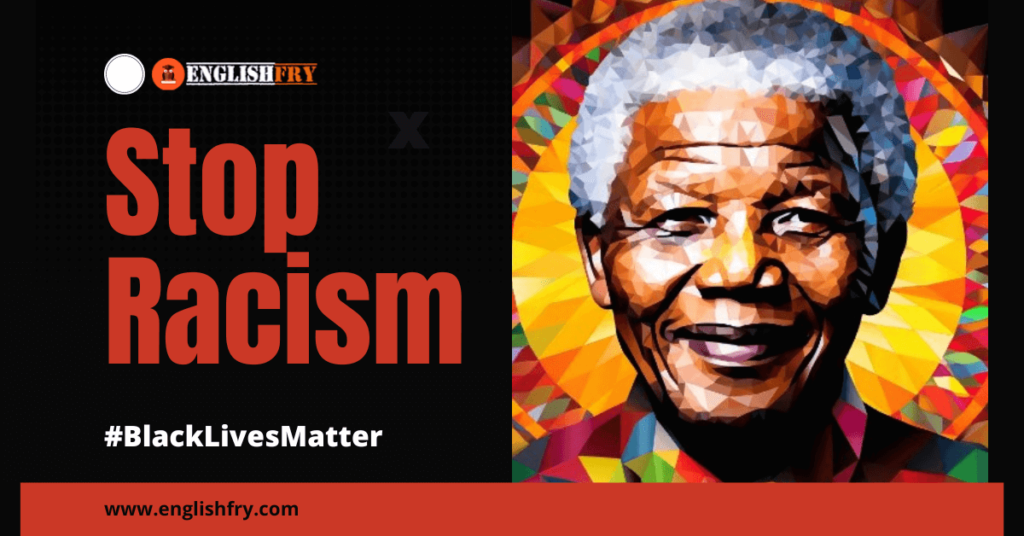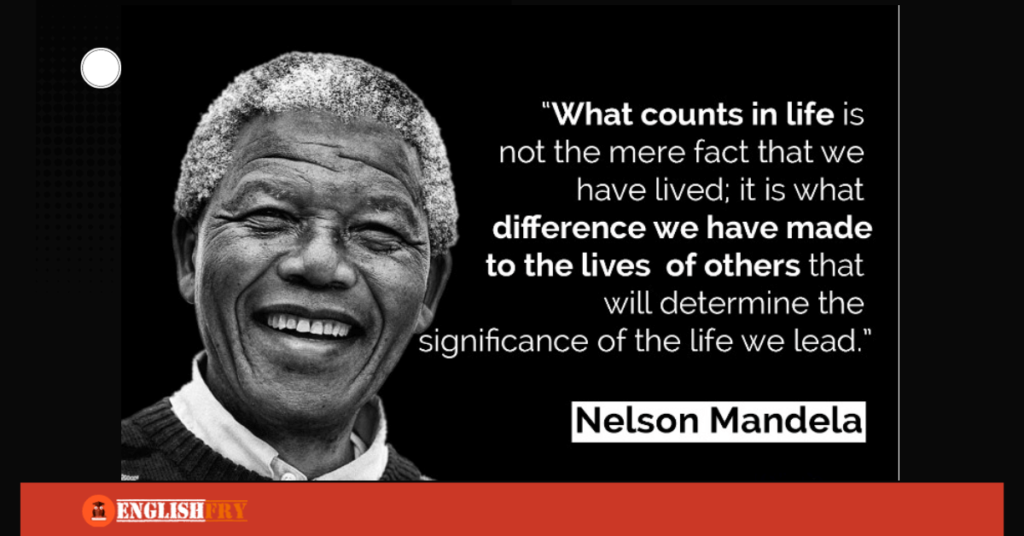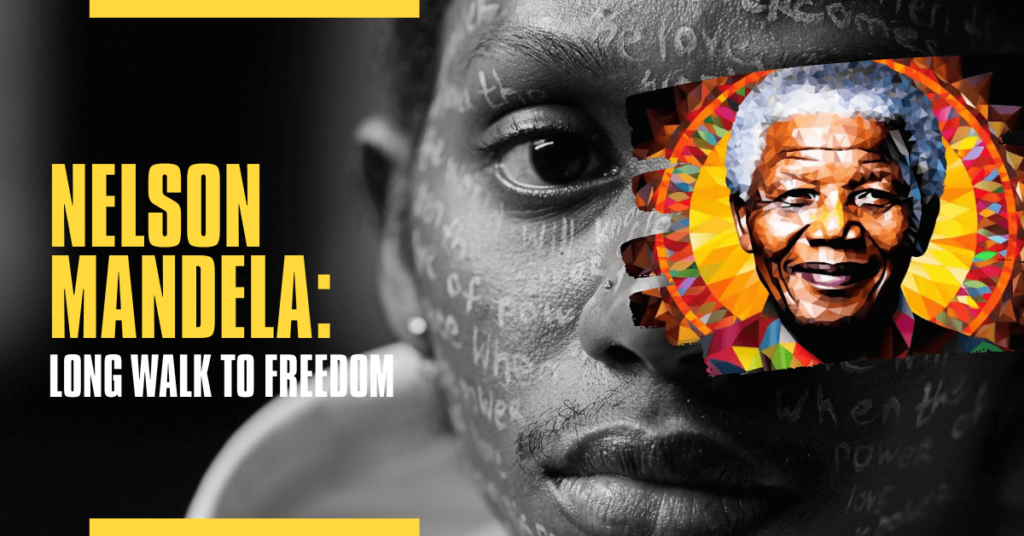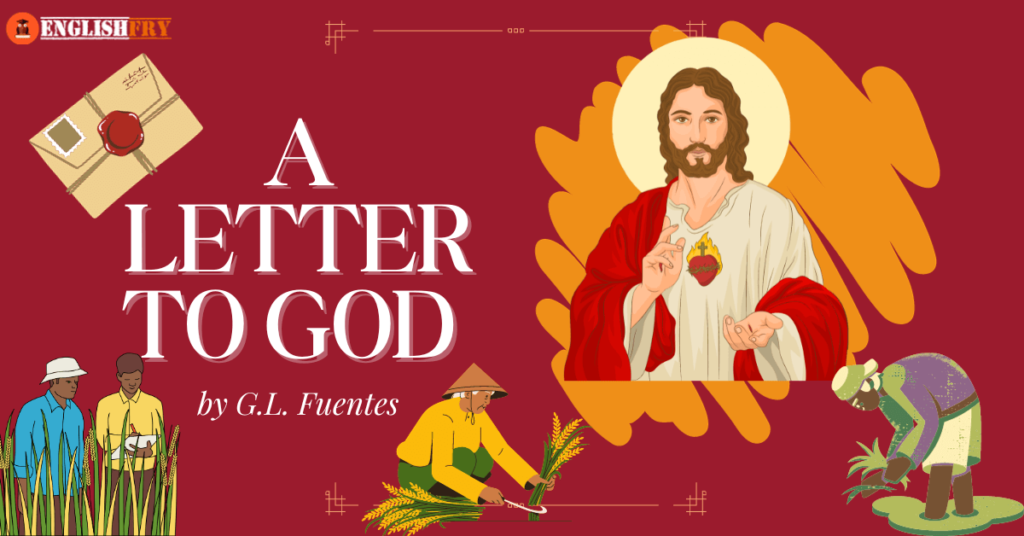Table of Contents
ToggleSummary
Nelson Mandela’s autobiography “Long Walk to Freedom” is a exceptional chapter in CBSE Class 10 English literature. The e book narrates the inspiring journey of Nelson Mandela, from his early days as a legal professional to his imprisonment and eventual release as South Africa’s first black president. The tale explores Mandela’s unwavering dedication to justice, equality, and freedom, and how he labored tirelessly to quit apartheid in South Africa. The book gives valuable classes on courage, willpower, and management that are relevant to students nowadays. By analyzing this bankruptcy, CBSE Class 10 students can find out about the existence and legacy of one of the global’s greatest leaders whilst also enhancing their language capabilities via reading and evaluation.
In the CBSE Class 10 English literature curriculum, the bankruptcy on Nelson Mandela’s “ Long Walk to Freedom” affords college students with a complete perception into the lifestyles of this iconic leader. The bankruptcy explores the social, political, and monetary conditions that prevailed in South Africa all through Mandela’s time, such as the apartheid regime that subjected the black population to systematic oppression and discrimination.

The e-book offers a first-hand account of Mandela’s experiences, which include his 27-year imprisonment, and his eventual release and upward push to the presidency. Through his non-public account, Mandela highlights the power of forgiveness, reconciliation, and non violent coexistence in achieving social alternate.
Apart from its ancient and political significance, the bankruptcy on “Long Walk to Freedom” is also a notable possibility for students to improve their analyzing and comprehension skills. By studying the text, students can discover ways to pick out key themes, literary gadgets, and other factors that make up a well-crafted narrative.

Nelson Mandela Long Walk to Freedom
Overall, the chapter on “Long Walk to Freedom” is an top notch addition to the CBSE Class 10 English literature curriculum, offering students with an engaging and informative account of one of the most great leaders of our time.
Here are the word meanings from the lesson on Nelson Mandela’s “Long Walk to Freedom”:

Explanations in Hindi
नेल्सन मंडेला की आत्मकथा “लॉन्ग वॉक टू फ्रीडम” सीबीएसई कक्षा 10 अंग्रेजी साहित्य में एक जबरदस्त अध्याय है। यह पुस्तक नेल्सन मंडेला की प्रेरक यात्रा का वर्णन करती है, एक वकील के रूप में उनके शुरुआती दिनों से लेकर उनके कारावास और अंततः दक्षिण अफ्रीका के पहले अश्वेत राष्ट्रपति के रूप में रिहाई तक। यह कहानी न्याय, समानता और स्वतंत्रता के प्रति मंडेला के अटूट समर्पण की पड़ताल करती है और कैसे उन्होंने दक्षिण अफ्रीका में रंगभेद को रोकने के लिए अथक प्रयास किया।
यह पुस्तक साहस, इच्छाशक्ति और प्रबंधन पर मूल्यवान कक्षाएं देती है जो आजकल छात्रों के लिए प्रासंगिक हैं। इस दिवालियापन का विश्लेषण करके, सीबीएसई कक्षा 10 के छात्र दुनिया के सबसे महान नेताओं में से एक के अस्तित्व और विरासत के बारे में पता लगा सकते हैं, साथ ही पढ़ने और मूल्यांकन के माध्यम से अपनी भाषा क्षमताओं को भी बढ़ा सकते हैं। सीबीएसई कक्षा 10 के अंग्रेजी साहित्य पाठ्यक्रम में, नेल्सन मंडेला की “लॉन्ग वॉक टू फ्रीडम” पर दिवालियापन कॉलेज के छात्रों को इस प्रतिष्ठित नेता के जीवन के बारे में पूरी जानकारी प्रदान करता है।
दिवालियापन उन सामाजिक, राजनीतिक और मौद्रिक स्थितियों की पड़ताल करता है जो मंडेला के समय में दक्षिण अफ्रीका में प्रचलित थीं, जैसे कि रंगभेद शासन जिसने काली आबादी को व्यवस्थित उत्पीड़न और भेदभाव का शिकार बनाया। ई-पुस्तक मंडेला के अनुभवों का प्रत्यक्ष विवरण प्रस्तुत करती है, जिसमें उनका 27 साल का कारावास, और उनकी अंतिम रिहाई और राष्ट्रपति पद तक आगे बढ़ना शामिल है।
अपने गैर-सार्वजनिक खाते के माध्यम से, मंडेला सामाजिक परिवर्तन प्राप्त करने में क्षमा, सुलह और अहिंसक सह-अस्तित्व की शक्ति पर प्रकाश डालते हैं। अपने प्राचीन और राजनीतिक महत्व के अलावा, “लॉन्ग वॉक टू फ़्रीडम” पर दिवालियापन छात्रों के लिए उनके विश्लेषण और समझ कौशल में सुधार करने की एक उल्लेखनीय संभावना भी है।
पाठ का अध्ययन करके, छात्र प्रमुख विषयों, साहित्यिक उपकरणों और अन्य कारकों को चुनने के तरीके खोज सकते हैं जो एक अच्छी तरह से तैयार की गई कहानी बनाते हैं। नेल्सन मंडेला की स्वतंत्रता की ओर लंबी यात्रा कुल मिलाकर, “लॉन्ग वॉक टू फ्रीडम” अध्याय सीबीएसई कक्षा 10 के अंग्रेजी साहित्य पाठ्यक्रम में एक शीर्ष पायदान है, जो छात्रों को हमारे समय के सबसे महान नेताओं में से एक के बारे में आकर्षक और जानकारीपूर्ण विवरण प्रदान करता है।

Explanations in Assamese
নেলছন মেণ্ডেলাৰ আত্মজীৱনী “লং ৱাক টু ফ্ৰিডম” চিবিএছইৰ দশম শ্ৰেণীৰ ইংৰাজী সাহিত্যৰ এক প্ৰচণ্ড অধ্যায়। ই কিতাপখনত নেলছন মেণ্ডেলাৰ প্ৰেৰণাদায়ক যাত্ৰাৰ বৰ্ণনা কৰা হৈছে, তেওঁৰ প্ৰথম দিনৰ পৰা আইনী পেছাদাৰী হিচাপে তেওঁৰ কাৰাগাৰত বন্দী হোৱা আৰু অৱশেষত দক্ষিণ আফ্ৰিকাৰ প্ৰথম কৃষ্ণাংগ ৰাষ্ট্ৰপতি হিচাপে মুক্তি পোৱালৈকে।
কাহিনীটোত মেণ্ডেলাৰ ন্যায়, সমতা আৰু স্বাধীনতাৰ প্ৰতি অটল সমৰ্পণ আৰু দক্ষিণ আফ্ৰিকাত বৰ্ণবৈষম্য ত্যাগ কৰিবলৈ তেওঁ কেনেকৈ অক্লান্তভাৱে কষ্ট কৰিছিল, সেই বিষয়ে অন্বেষণ কৰা হৈছে। কিতাপখনত সাহস, ইচ্ছাশক্তি, পৰিচালনাৰ মূল্যৱান ক্লাছ দিয়া হৈছে যিবোৰ আজিকালি ছাত্ৰ-ছাত্ৰীৰ বাবে প্ৰাসংগিক। এই দেউলীয়া বিশ্লেষণ কৰি চিবিএছইৰ দশম শ্ৰেণীৰ ছাত্ৰ-ছাত্ৰীসকলে বিশ্বৰ অন্যতম শ্ৰেষ্ঠ নেতাৰ অস্তিত্ব আৰু উত্তৰাধিকাৰৰ বিষয়ে জানিব পাৰে আৰু লগতে পঢ়া আৰু মূল্যায়নৰ জৰিয়তে তেওঁলোকৰ ভাষাৰ ক্ষমতাও বৃদ্ধি কৰিব পাৰে।
চিবিএছইৰ দশম শ্ৰেণীৰ ইংৰাজী সাহিত্যৰ পাঠ্যক্ৰমত নেলছন মেণ্ডেলাৰ “লং ৱাক টু ফ্ৰিডম”ৰ দেউলীয়া হোৱাৰ ফলত কলেজীয়া ছাত্ৰ-ছাত্ৰীসকলে এই আইকনিক নেতাজনৰ জীৱনশৈলীৰ বিষয়ে সম্পূৰ্ণ ধাৰণা লাভ কৰে। দেউলীয়াই মেণ্ডেলাৰ সমগ্ৰ সময়ছোৱাত দক্ষিণ আফ্ৰিকাত প্ৰচলিত সামাজিক, ৰাজনৈতিক আৰু আৰ্থিক পৰিস্থিতিৰ সন্ধান কৰে, যেনে বৰ্ণবৈষম্য শাসন ব্যৱস্থাই কৃষ্ণাংগ জনসাধাৰণক পদ্ধতিগতভাৱে অত্যাচাৰ আৰু বৈষম্যৰ সন্মুখীন কৰাইছিল।
ই-বুকখনত মেণ্ডেলাৰ অভিজ্ঞতাৰ প্ৰত্যক্ষ বিৱৰণ দিয়া হৈছে, য’ত তেওঁৰ ২৭ বছৰীয়া কাৰাদণ্ড, আৰু অৱশেষত তেওঁৰ মুক্তি আৰু ৰাষ্ট্ৰপতি পদলৈ ওপৰলৈ ঠেলি দিয়া আদিও আছে। তেওঁৰ অৰাজহুৱা বিৱৰণীৰ জৰিয়তে মেণ্ডেলাই সামাজিক বিকল্প লাভৰ ক্ষেত্ৰত ক্ষমা, মিলন আৰু অহিংস সহাৱস্থানৰ শক্তিৰ ওপৰত আলোকপাত কৰিছে। প্ৰাচীন আৰু ৰাজনৈতিক তাৎপৰ্য্যৰ উপৰিও “স্বাধীনতালৈ দীঘলীয়া খোজ”ৰ ওপৰত দেউলীয়া হোৱাটোও ছাত্ৰ-ছাত্ৰীসকলৰ বাবে বিশ্লেষণ আৰু বুজাৰ দক্ষতা বৃদ্ধিৰ এক উল্লেখযোগ্য সম্ভাৱনা।
পাঠটো অধ্যয়ন কৰি ছাত্ৰ-ছাত্ৰীসকলে মূল বিষয়বস্তু, সাহিত্যিক গেজেট আৰু অন্যান্য কাৰকসমূহ বাছি উলিওৱাৰ উপায় আৱিষ্কাৰ কৰিব পাৰে যিয়ে এটা সু-নিৰ্মিত আখ্যান গঠন কৰে। নেলছন মেণ্ডেলা লং ৱাক টু ফ্ৰিডম সামগ্ৰিকভাৱে “লং ৱাক টু ফ্ৰিডম” শীৰ্ষক অধ্যায়টো চিবিএছইৰ দশম শ্ৰেণীৰ ইংৰাজী সাহিত্যৰ পাঠ্যক্ৰমৰ এক শীৰ্ষস্থানীয় সংযোজন, যিয়ে ছাত্ৰ-ছাত্ৰীসকলক আমাৰ সময়ৰ এজন মহান নেতাৰ আকৰ্ষণীয় আৰু তথ্যসমৃদ্ধ বিৱৰণ আগবঢ়ায়।
Word Meanings
| WORD | MEANING |
| Apartheid | a system of institutional racial segregation and discrimination in South Africa from 1948 to 1994 |
| Autobiography | a written account of one’s own life, typically by the person themselves |
| Reconciliation | the restoration of friendly relations between individuals or groups |
| Perseverance | persistence in doing something despite difficulty or delay in achieving success |
| Oppressor | a person or group that exercises power and control over another, often in a cruel or unjust manner |
| Legacy | something that is passed on to future generations, typically a gift or inheritance |
| Ideal | a concept or standard of excellence or perfection that is pursued as a goal |
| Resilient | able to withstand or recover quickly from difficult conditions |
| Inclusive | including all members or aspects of a group or situation |
| Compassionate | feeling or showing sympathy and concern for others, especially those who are suffering. |
Textual & Extra Question Answers
1: Who is the subject of the chapter “Nelson Mandela: Long Walk to Freedom”?
Answer: Nelson Mandela.
2: What does the chapter focus on?
Answer: The life and journey of Nelson Mandela.
3: What is the main theme of the chapter?
Answer: Nelson Mandela’s struggle against apartheid and his fight for freedom and equality.
4: What is the significance of the title “Long Walk to Freedom”?
Answer: It symbolizes Nelson Mandela’s lifelong journey towards achieving freedom and justice for the people of South Africa.
5: Which book does the chapter belong to?
Answer: “Long Walk to Freedom” is the autobiography of Nelson Mandela.
6: What is the overall message conveyed in the chapter?
Answer: The power of perseverance, resilience and the pursuit of justice.
7: How does Nelson Mandela’s story inspire readers?
Answer: Nelson Mandela’s story serves as an inspiration by showcasing the strength of the human spirit and the ability to bring about positive change even in the most challenging circumstances.
8: What were some of the key events in Nelson Mandela’s life mentioned in the chapter?
Answer: Some key events in Nelson Mandela’s life mentioned in the chapter include his involvement in the African National Congress (ANC), his imprisonment for 27 years, his release in 1990, his role in negotiating the end of apartheid, and his election as South Africa’s first black president in 1994.
9.What is Apartheid?
Answer: Apartheid was a system of racial segregation and discrimination enforced by the South African government from 1948 to 1994. It denied them basic rights and opportunities to non-white South Africans. Laws of apartheid laws enforced racial separation in all aspects of life and created a deeply unequal society. Nelson Mandela fought against apartheid to dismantle it and establish a democratic and inclusive South African society.
10.Explain the significance(importance) of the title “Long Walk to Freedom” in the context of Nelson Mandela’s life.
The title “Long Walk to Freedom” is significant in the context of Nelson Mandela’s life as it captures the essence of his struggle against apartheid in South Africa. It refers to the long and difficult journey that he and others took to achieve freedom and equality for all.
The title also reflects the personal journey that Mandela took in his life. He endured many years of imprisonment and hardship, but he remained committed to his ideals and his vision of a free and democratic South Africa.
The phrase “Long Walk to Freedom” also suggests that freedom is not something that can be achieved easily or quickly, but rather something that must be earned through perseverance and sacrifice.
Overall, the title “Long Walk to Freedom” is a fitting tribute to Mandela’s life. It reminds us of the challenges that he and others faced in their fight for freedom, and it serves as a reminder of the importance of perseverance and determination in the face of adversity.
11. Discuss the role of Nelson Mandela in the fight against apartheid in South Africa.
Nelson Mandela played a crucial role in the fight against apartheid in South Africa. He was a prominent anti-apartheid activist and leader who worked tirelessly to end racial segregation and discrimination in the country.He played a pivotal role in the negotiations that led to the end of apartheid and the establishment of a democratic government.
Mandela joined the African National Congress (ANC) in 1944. He became a leading voice in the fight against apartheid.
Mandela was imprisoned him for 27 years. However, even in prison, Mandela continued to inspire and lead the anti-apartheid movement.
When he was eventually released from prison in 1990, Mandela continued his work to end apartheid . In 1994, Mandela was elected as the first black president of South Africa. That moment marked the end of apartheid and the beginning of a new era of democracy .
Mandela’s legacy is an epitome of human rights and social justice. Mandela continues to inspire people around the world. His leadership and vision serves as a reminder of the power of perseverance, courage, and compassion in the face of adversity.
12. How does the chapter on “Long Walk to Freedom” reflect Mandela’s philosophy of forgiveness and reconciliation?
The chapter on “Long Walk to Freedom” in Nelson Mandela’s autobiography reflects his philosophy of forgiveness and reconciliation. Throughout the chapter, Mandela emphasizes the importance of forgiveness.
Mandela describes his experiences in prison, where he was able to reflect on his own beliefs and the need for forgiveness. He realized that forgiveness was not a weakness, but a strength, and that it was essential for healing the wounds of the past. It was essential to build a new society based on equality and justice.
Mandela also emphasizes the importance of reconciliation. He believes that reconciliation is not simply a matter of forgetting the past, but rather of acknowledging the wrongs that have been done and working together to build a better future.
Throughout the chapter, Mandela’s philosophy of forgiveness and reconciliation is reflected in his actions and his words. He demonstrates his commitment to these values by reaching out to his former jailers and working to build bridges between different communities.
Despite facing numerous setbacks and obstacles, he never wavered. Another important lesson is the value of forgiveness and reconciliation. Overall, Mandela’s life and leadership offer a roadmap for young people seeking to effect positive change in the world. His example teaches us to be resilient, compassionate and committed to making the world a better place for all.
13. Describe the challenges faced by Mandela during his imprisonment and his eventual release
Answer: During his 27 years in prison, Nelson Mandela faced numerous challenges. He was subjected to harsh living conditions, including small cells, inadequate food and medical care, and limited access to books and writing materials.
Mandela’s release from prison in 1990 was a significant moment in South African history. Mandela faced intense pressure from both sides, as some people saw him as a hero while others saw him as a threat. He worked tirelessly to build bridges between different communities
Mandela’s release from prison also marked the beginning of a new chapter in South African history. He played a pivotal role in the negotiations that led to the end of apartheid and the establishment of a democratic government.
Despite the challenges he faced during his imprisonment and after his release, Mandela remained committed to his principles of justice and equality. His unwavering determination and leadership continue to inspire people around the world.
14.Explain the significance of the title “Long Walk to Freedom” in the context of Nelson Mandela’s life.
Answer: The title “Long Walk to Freedom” is significant in the context of Nelson Mandela’s life as it captures the essence of his struggle against apartheid in South Africa. It refers to the long and difficult journey that he and others took to achieve freedom and equality for all.
The title also reflects the personal journey that Mandela took in his life. He endured many years of imprisonment and hardship, but he remained committed to his ideals and his vision of a free and democratic South Africa.
The phrase “Long Walk to Freedom” also suggests that freedom is not something that can be achieved easily or quickly, but rather something that must be earned through perseverance and sacrifice.
Overall, the title “Long Walk to Freedom” is a fitting tribute to Mandela’s life and his legacy. It reminds us of the challenges that he and others faced in their fight for freedom, and it serves as a reminder of the importance of perseverance and determination in the face of adversity.
15.Discuss the role of Nelson Mandela in the fight against apartheid in South Africa.
Answer: Nelson Mandela played a crucial role in the fight against apartheid in South Africa. He was a prominent anti-apartheid activist and leader who worked tirelessly to end racial segregation and discrimination in the country.
Mandela became involved in politics early in his life and joined the African National Congress (ANC) in 1944. He quickly rose through the ranks of the organization and became a leading voice in the fight against apartheid.
Mandela’s activism was met with fierce resistance from the apartheid government, which arrested him and imprisoned him for 27 years. However, even in prison, Mandela continued to inspire and lead the anti-apartheid movement.
When he was eventually released from prison in 1990, Mandela continued his work to end apartheid and promote reconciliation and healing in South Africa. He played a pivotal role in the negotiations that led to the end of apartheid and the establishment of a democratic government in South Africa.
In 1994, Mandela was elected as the first black president of South Africa, a historic moment that marked the end of apartheid and the beginning of a new era of democracy and equality.
Mandela’s legacy as a champion of human rights and social justice continues to inspire people around the world. His leadership and vision were instrumental in bringing about change in South Africa and his life serves as a reminder of the power of perseverance, courage, and compassion in the face of adversity.
16.Analyze the writing style and literary devices used by Mandela in his autobiography.
Answer: Nelson Mandela’s autobiography, “Long Walk to Freedom,” is a powerful and poignant work that reflects his life, struggles, and triumphs. Mandela’s writing style is characterized by its clarity, simplicity, and authenticity.
Throughout the book, Mandela employs various literary devices such as metaphor, symbolism, and imagery to convey his message effectively. For example, the title “Long Walk to Freedom” is a metaphor for his journey towards achieving freedom and justice for his people.
Mandela also uses vivid imagery to describe his experiences and the people around him. For instance, he uses the metaphor of a garden to describe the diverse cultures and traditions of South Africa.
Mandela’s writing style is also marked by his use of repetition, which reinforces his message and emphasizes its importance. He frequently repeats key phrases and ideas, such as the importance of forgiveness and reconciliation.
Moreover, Mandela’s autobiography is characterized by his use of personal anecdotes and stories, which add a human touch to his writing and make his message more relatable.
Overall, Mandela’s writing style is simple, clear, and effective. His use of literary devices and personal anecdotes make his autobiography a compelling and inspiring read, and his message of hope, forgiveness, and reconciliation resonates with readers around the world.
17.How does the chapter on “Long Walk to Freedom” reflect Mandela’s philosophy of forgiveness and reconciliation?
The chapter on “Long Walk to Freedom” in Nelson Mandela’s autobiography reflects his philosophy of forgiveness and reconciliation. Throughout the chapter, Mandela emphasizes the importance of forgiveness as a means to move past the injustices of the past and build a better future.
Mandela describes his experiences in prison, where he was able to reflect on his own beliefs and the need for forgiveness. He realized that forgiveness was not a weakness, but a strength, and that it was essential for healing the wounds of the past and building a new society based on equality and justice.
Mandela also emphasizes the importance of reconciliation, which he sees as an essential part of the healing process. He believes that reconciliation is not simply a matter of forgetting the past, but rather of acknowledging the wrongs that have been done and working together to build a better future.
Throughout the chapter, Mandela’s philosophy of forgiveness and reconciliation is reflected in his actions and his words. He demonstrates his commitment to these values by reaching out to his former jailers and working to build bridges between different communities.
Overall, the chapter on “Long Walk to Freedom” reflects Mandela’s belief in the transformative power of forgiveness and reconciliation. It shows how these values can help to heal the wounds of the past and build a better future based on justice and equality.
18.Describe the challenges faced by Mandela during his imprisonment and his eventual release
Answer: During his 27 years in prison, Nelson Mandela faced numerous challenges. He was subjected to harsh living conditions, including small cells, inadequate food and medical care, and limited access to books and writing materials. Despite these challenges, Mandela remained committed to his principles and continued to fight for freedom and justice.
Mandela’s release from prison in 1990 was a significant moment in South African history. However, it was not without its challenges. Mandela faced intense pressure from both sides, as some people saw him as a hero while others saw him as a threat.
Despite this, Mandela remained committed to his principles of reconciliation and forgiveness. He worked tirelessly to build bridges between different communities and to promote healing and unity in South Africa.
Mandela’s release from prison also marked the beginning of a new chapter in South African history. He played a pivotal role in the negotiations that led to the end of apartheid and the establishment of a democratic government.
Despite the challenges he faced during his imprisonment and after his release, Mandela remained committed to his principles of justice and equality. His unwavering determination and leadership continue to inspire people around the world.
19.Compare and contrast the conditions of black and white people in South Africa during apartheid
Answer: During apartheid, the conditions of black and white people in South Africa were vastly different. White people enjoyed numerous privileges, while black people were subjected to discrimination and oppression.
White people had access to better education, healthcare, and job opportunities, while black people were denied these basic rights. Black people were forced to live in overcrowded and underdeveloped townships, while white people lived in comfortable homes and neighborhoods.
Black people were also subjected to arbitrary arrests, torture, and detention without trial, while white people were largely immune to such treatment. They were also subject to numerous other discriminatory laws, such as the Group Areas Act and the Pass Laws, which restricted their freedom of movement and their ability to own property.
Overall, the conditions of black and white people in South Africa during apartheid were vastly different. White people enjoyed privileges and opportunities that were denied to black people, who were subjected to discrimination and oppression.
20.Discuss the relevance of Mandela’s message of peace and unity in today’s world.
Answer : Mandela’s message of peace and unity remains highly relevant in today’s world. In a time of increasing division and conflict, his teachings on forgiveness and reconciliation offer a powerful message of hope.
Mandela’s life and leadership demonstrate that it is possible to overcome even the most deeply entrenched conflicts and to build a better future based on shared values and a commitment to justice and equality.
His message of peace and unity resonates across all cultures and borders, reminding us of the essential humanity that we all share. In today’s world, where we are facing many challenges, including climate change, political division, and economic inequality, Mandela’s message is more important than ever.
By embracing his teachings on forgiveness and reconciliation, we can work together to build a better world for ourselves and future generations.
21.Evaluate the significance of “Long Walk to Freedom” as a historical and literary work.
Answer: “Long Walk to Freedom” is a significant work both historically and literarily. It offers a firsthand account of Nelson Mandela’s life and his struggle against apartheid in South Africa. As such, it is an invaluable historical document that sheds light on the political and social conditions of the time.
In addition to its historical significance, “Long Walk to Freedom” is also a powerful literary work. Mandela’s writing is both insightful and engaging, providing a vivid portrait of his life and experiences. He uses a range of literary devices, including metaphors, imagery, and symbolism, to convey his message and to connect with his readers.
Overall, “Long Walk to Freedom” is a groundbreaking work that has had a profound impact on both literature and history. It continues to be widely read and studied, serving as an inspiration to people around the world who are fighting for freedom, justice, and equality.
22.What lessons can be learned from Mandela’s life and leadership for young people today?
Answer:Nelson Mandela’s life and leadership offer many valuable lessons for young people today. His unwavering commitment to justice, equality, and reconciliation serves as a powerful example of how to effect positive change in the world.
One of the most important lessons to be learned from Mandela is the importance of perseverance. Despite facing numerous setbacks and obstacles, he never wavered in his commitment to his cause. His ability to stay focused and determined in the face of adversity is a valuable lesson for young people today.
Another important lesson is the value of forgiveness and reconciliation. Mandela’s willingness to forgive his oppressors and to work towards building a more inclusive society serves as a powerful example of how to overcome deep-seated divisions and conflicts.
Overall, Mandela’s life and leadership offer a roadmap for young people seeking to effect positive change in the world. His example teaches us to be resilient, compassionate, and committed to making the world a better place for all.

20 MCQ's Latest format
1.What event was taking place on the 10th of May as described in the text?
A) Nelson Mandela’s birthday
B) Inauguration of South Africa’s first democratic government
C) The end of apartheid
D) The Anglo-Boer war
Answer: B) Inauguration of South Africa’s first democratic government
2.Who was the first person to be sworn in on the day of the inauguration?
A) Nelson Mandela
B) Zenani Mandela
C) Thabo Mbeki
D) Mr. de Klerk
Answer: D) Mr. de Klerk
3.Which song did both whites and blacks sing on the day of the inauguration, even if they didn’t know the lyrics?
A) “Nkosi Sikelel –iAfrika”
B) “Die Stem”
C) “God Bless Africa”
D) “Apartheid No More”
Answer: A) “Nkosi Sikelel –iAfrika” and B) “Die Stem”
4.What is the central theme of this passage?
A) The history of apartheid in South Africa
B) The significance of the inauguration of a new government
C) The struggle for freedom and equality
D) The development of the South African flag
Answer: C) The struggle for freedom and equality
5.What does the author mean by “the sun shall never set on so glorious a human achievement”?
A) The sun will never rise again in South Africa.
B) The achievement of freedom will always be celebrated.
C) South Africa will always be a peaceful country.
D) The sun will never set on the international leaders who attended the inauguration.
Answer: B) The achievement of freedom will always be celebrated.
6.Why does the author mention “the chains on anyone of my people were the chains on all of them”?
A) To highlight the importance of unity and solidarity among the people.
B) To emphasize the need for physical restraints on prisoners.
C) To describe the symbolic chains worn by the leaders at the inauguration.
D) To illustrate the history of South African prisons.
Answer: A) To highlight the importance of unity and solidarity among the people.
7.According to the text, what transformation occurred in the author’s life?
A) From a criminal to a law-abiding attorney.
B) From a family-loving husband to a monk.
C) From a prisoner of hatred to a freedom fighter.
D) From a man without a home to a homeowner.
Answer: B) From a family-loving husband to a monk.
8.What is the author’s view on freedom?
A) Freedom is a luxury that not everyone can enjoy.
B) Freedom is a fundamental right of every human being.
C) Freedom is only important to those who are oppressed.
D) Freedom is attainable through hatred and prejudice.
Answer: B) Freedom is a fundamental right of every human being.
9.What historical event is mentioned in the text that took place in the first decade of the twentieth century?
A) The inauguration of South Africa’s first democratic government
B) The end of apartheid
C) The Anglo-Boer war
D) The abolishment of slavery
Answer: C) The Anglo-Boer war
10.According to the author, what was the unintended effect of decades of oppression and brutality under apartheid?
A) The creation of a system of racial domination
B) The establishment of a new government
C) The birth of remarkable leaders and activists
D) The perpetuation of hatred and prejudice
Answer: C) The birth of remarkable leaders and activists
11.What is the author’s perspective on courage?
A) Courage is the absence of fear.
B) Courage is the same as bravery.
C) Courage is the triumph over fear.
D) Courage is not important in the struggle for freedom.
Answer: C) Courage is the triumph over fear.
12.What is the main message the author is trying to convey about freedom?
A) Freedom is a transitory luxury.
B) Freedom should be cherished and protected.
C) Freedom is only for those who are born with it.
D) Freedom is a burden to those who have it.
Answer: B) Freedom should be cherished and protected.
13.What does the author mean when he says, “Out of the experience of an extraordinary human disaster that lasted too long, must be born a society of which all humanity will be proud”?
A) The inauguration of a new government will erase the memory of the disaster.
B) The past suffering of the people will lead to the creation of a just and proud society.
C) The disaster was a necessary part of history that cannot be changed.
D) The disaster has been forgotten by humanity.
Answer: B) The past suffering of the people will lead to the creation of a just and proud society.
13.When the author says, “The sun shall never set on so glorious a human achievement,” what does he refer to?
A) The sun will never set again in South Africa.
B) The achievement of political emancipation in South Africa.
C) The glorious sunset on the day of the inauguration.
D) The international leaders present at the inauguration.
Answer: B) The achievement of political emancipation in South Africa.
14.According to the author, “No one is born hating another person because of the color of his skin.” What is the author’s perspective on hate?
A) Hate is inherent in human nature.
B) Hate is a learned behavior.
C) Hate is justified in certain situations.
D) Hate is a natural response to fear.
Answer: B) Hate is a learned behavior.
15.What twin obligations does the author mention in the passage?
A) Obligations to one’s family and to one’s country
B) Obligations to one’s friends and to one’s community
C) Obligations to one’s job and to one’s religion
D) Obligations to one’s education and to one’s health
Answer: A) Obligations to one’s family and to one’s country
16.What is the significance of the jets, helicopters, and troop carriers flying over the Union Buildings?
A) A demonstration of South Africa’s air force capabilities
B) A display of military force to intimidate the people
C) A show of loyalty to the newly elected government
D) A celebration of South Africa’s military history
Answer: C) A show of loyalty to the newly elected government
17.Why does the author mention the “black, red, green, blue, and gold of the new South African flag” in the text?
A) To describe the colors of the South African flag
B) To highlight the diversity and unity of the nation
C) To discuss the historical significance of flag colors
D) To signify the end of apartheid
Answer: B) To highlight the diversity and unity of the nation
18.According to the author, what does he find to be the greatest wealth of his country?
A) Natural resources like minerals and gems
B) A strong economy and industrial development
C) The unity and character of its people
D) Its cultural heritage and traditions
Answer: C) The unity and character of its people
19.In the text, the author mentions the “chains on anyone of my people were the chains on all of them.” What message is he trying to convey with this statement?
A) The need for stronger law enforcement
B) The interconnectedness and interdependence of all people
C) The importance of physical restraints
D) The impact of apartheid on the economy
Answer: B) The interconnectedness and interdependence of all people
20.What does the author mean when he says, “Freedom is indivisible”?
A) Freedom should be equally distributed among all individuals.
B) Freedom can be divided into different types.
C) Freedom should be shared among family members.
D) Freedom cannot be separated from other essential rights.
Answer: D) Freedom cannot be separated from other essential rights.
Founder of Englishfry.com, a captivating and knowledge-driven blog & Founder of Android app/website Studyfunnel.com, an online Mock Test Series Portal. With a wealth of experience spanning over 16+ years, he has excelled as an Ex-professor, Teacher, Author of Book “Island of Illusion”, Website Developer, Graphic Designer,Blogger,Poet, and Creative academic content writer. His tryst in Literature helped him realize his love for writing and telling stories. A tech-savvy language nerd by day and, a passionate writer by night, he now translates his experiences into tales of wisdom served with a side of humor.His widely recognized profound insights ,captivating writing style makes him contribute to prestigious publications and a sought-after authority in the field.








